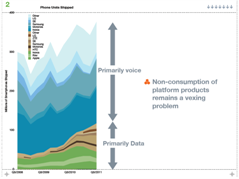
Facebook Home: what is the impact?
Facebook has launched ‘Facebook Home’, technically a shell around the Android OS, that in theory creates valuable new advertising inventory on the screens of users’ phones. What will its impact be in practice for Facebook, and on Google, mobile operators, and other device manufacturers? (April 2013, Foundation 2.0, Executive Briefing Service, Dealing with Disruption Stream.)
Facebook Home ‘Coverfeed’ April 2013



